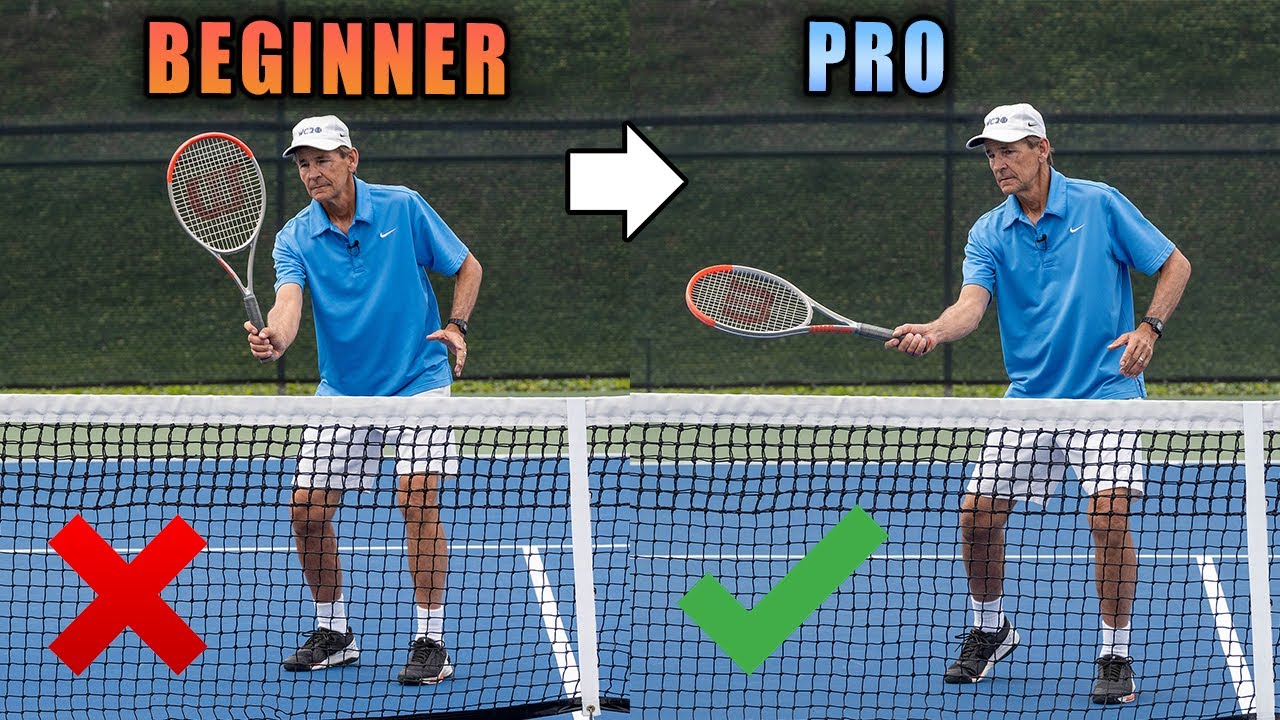How to Choose a Tennis Racquet: Part 1
Summary
TLDRThis YouTube video offers a comprehensive guide on selecting a tennis racket. It emphasizes factors like age, fitness, and experience level, recommending shorter rackets for younger players and lighter, larger-headed ones for beginners or older players. The video simplifies technical jargon, focusing on crucial aspects like racket weight, balance, swing weight, head size, string pattern, and beam thickness. It clarifies that while materials and technology matter, the physical characteristics significantly influence racket performance and play style.
Takeaways
- 👶 Consider the age, fitness, and experience level when choosing a tennis racket.
- 🏃♂️ Younger or beginner players may benefit from shorter, lighter rackets with larger head sizes for easier play.
- 🤔 For intermediate to competitive players, standard or commercially produced rackets are recommended.
- 🏋️ Weight of the racket affects feel and stability but not as much as other characteristics.
- ⚖️ Balance point is crucial; headlight rackets have more weight in the handle, head heavy rackets have more in the head.
- 🔄 Swing weight is the most important factor affecting racket performance, impacting maneuverability and stability.
- 🎾 Racket head size influences the sweet spot and forgiveness; larger heads provide more power, smaller heads offer more control.
- 🧵 String pattern affects launch angle, control, and spin; denser patterns offer more control, while more open patterns allow for higher ball trajectory.
- 🏓 Beam thickness or stiffness contributes to the pop and feel of the racket; thinner beams are more flexible, thicker beams provide more rigidity.
- 🛠️ While technology and materials in rackets can impact performance, the physical characteristics like weight, balance, swing weight, head size, string pattern, and beam thickness are what truly affect how the ball performs off the racket.
Q & A
What is the first thing to consider when choosing a tennis racket?
-The first thing to consider when choosing a tennis racket is the age of the player, their fitness level, and their experience level.
Why should younger players choose a shorter racket?
-Younger players should choose a shorter racket because it can range from 21 to 26 inches, making it easier for them to handle and maneuver.
What are the benefits of a lighter racket with a larger head size for older or less athletic players?
-A lighter racket with a larger head size is more forgiving and easier to play with, offering more power with smaller strokes, which is beneficial for older or less athletic players.
What is the significance of the weight of a tennis racket?
-The weight of a tennis racket affects the feel in the player's hand and the stability but has less impact on performance compared to other characteristics.
How is the balance point of a racket determined and what does it affect?
-The balance point of a racket is determined by balancing it on a rod and seeing at what point it evenly balances. It affects how the racket feels in the player's hands and how it moves through the air.
What is swing weight and why is it important?
-Swing weight is a measure of how much force it takes to move the racket side to side and is important because it significantly impacts performance on the court, affecting maneuverability and stability at contact.
How does racket head size impact a player's game?
-A larger racket head size provides a bigger sweet spot and more forgiveness, while a smaller head size requires more precise contact for power and control.
What is the relationship between string pattern and the performance of a tennis racket?
-The string pattern affects the launch angle and control of the shot. A denser pattern provides more control, while a more open pattern allows for higher launch angles and deeper shots.
How does beam thickness or stiffness of a racket influence the feel and performance?
-A thicker or stiffer racket provides a crisp response and pop, while a thinner or more flexible racket offers more dwell time and feel, which can be more comfortable for some players.
Why is it not always true that a thinner beam results in a less stiff racket?
-It's not always true that a thinner beam results in a less stiff racket because the overall stiffness can also be influenced by the material and construction of the racket, not just the beam thickness.
What should players prioritize when selecting a tennis racket according to the script?
-Players should prioritize the physical characteristics of the racket such as weight, balance, swing weight, head size, string pattern, and beam thickness, as these have the most tangible impact on performance.
Outlines

このセクションは有料ユーザー限定です。 アクセスするには、アップグレードをお願いします。
今すぐアップグレードMindmap

このセクションは有料ユーザー限定です。 アクセスするには、アップグレードをお願いします。
今すぐアップグレードKeywords

このセクションは有料ユーザー限定です。 アクセスするには、アップグレードをお願いします。
今すぐアップグレードHighlights

このセクションは有料ユーザー限定です。 アクセスするには、アップグレードをお願いします。
今すぐアップグレードTranscripts

このセクションは有料ユーザー限定です。 アクセスするには、アップグレードをお願いします。
今すぐアップグレード関連動画をさらに表示

Slice Serve vs Kick Serve In Tennis - How and When To Hit Each One

Looking for a new tennis racquet? A guide.

How to Play Badminton for Beginners - All Rules Explained

How to Make Viral Monetizable Faceless YouTube Videos ($300/Day)

Professional Volley Technique Explained | Volley Tennis Lesson

Tennis Coordination Drills
5.0 / 5 (0 votes)
